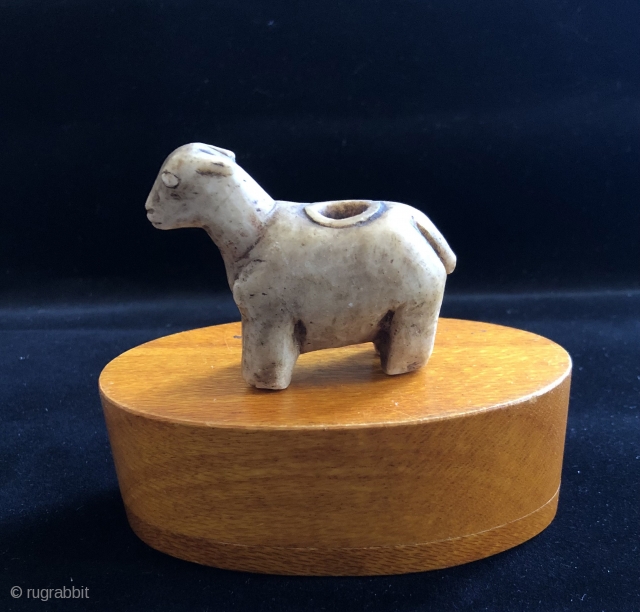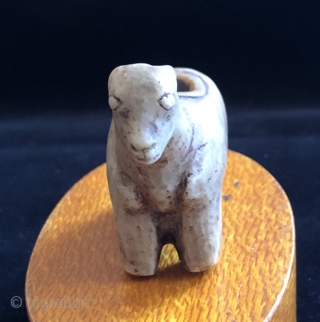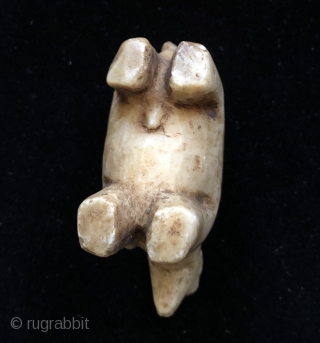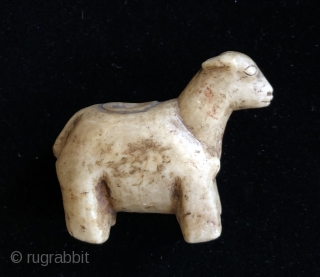Back
Kallawaya fetish - an alabaster figure carved by an Andean medicine man sometime during the 19th century or before. It comes from the altiplano region of Bolivia. If it was from the Pre-Columbian era it would be called a canopa. Incan period canopas and are well represented in museum collections around the world. They were ritual fetishes usually in the shape of a llama. What differentiates canopas from the other more common fetishes called illas - is the chamber carved into the top portion of the fetish. This chamber was meant to hold ritual ingredients usually animal fat, coca, mica flakes, red pigments , native tobacco and sometimes bits of silver foil. Illa type fetishes, also carved from alabaster, do not have this chamber. Incan canopas were placed around the borders of herding territories as boundary markers and were thought to protect the animals from predation and to promote fertility. This canopa still retains evidence of the ritual ingredients once placed inside. Although the Kallawaya medicine men carved other feitshes in the shape of animals, it is highly unusual to find canopas from the post Incan period. i have only seen a few over the years. This canopa is a direct link to the Pre-Columbian canopas and is exceedingly rare. It is not clear why other canopas from the post-conquest period are not extant. This example is from an old collection. Size: 3 x 2.50 inches.
price:
Inquire
- Home
- Antique Rugs by Region
- Category
- Profiles
- Post Items Free
- Albums
- Benaki Museum of Islamic Art
- Budapest: Ottoman Carpets
- Gulbenkian Museum
- Islamic Carpets. Brooklyn
- Islamic Textiles. Brooklyn
- Konya Museum: Rugs
- MKG, Hamburg
- MMA: Caucasian Carpets
- MMA: Mamluk Carpets
- MMA: Mughal Indian Carpets
- MMA: Ottoman Carpets
- MMA: Safavid Persian Carpets
- MMA: Turkmen Rugs
- McCoy Jones Kilims
- Ottoman textiles. Met
- Philadelphia Museum
- Rugs and Carpets: Berlin
- Seljuqs at the Met
- TIEM, Istanbul: Carpets
- V&A: Classical Carpets
- Vakiflar Carpets: Istanbul
- Baluch Rugs: Indianapolis
- Gallery Exhibitions
- Jaf an Exhibition
- Alberto Levi Gallery
- Andean Textile
- Christie's London: 2016
- Francesca Galloway
- HALI at 40
- ICOC Washington, DC 2018
- Jajims of the Shahsavan
- London Islamic Week April, 2018
- Mongolian Felts
- Navajo Rugs: JB Moore
- Persian Piled Weavings
- SF Tribal & Textile Art Show 2020
- SF Tribal 2019
- Sotheby's: C. Alexander
- Turkish Prayer Rugs
- Turkmen Main Carpets ICOC 2007













